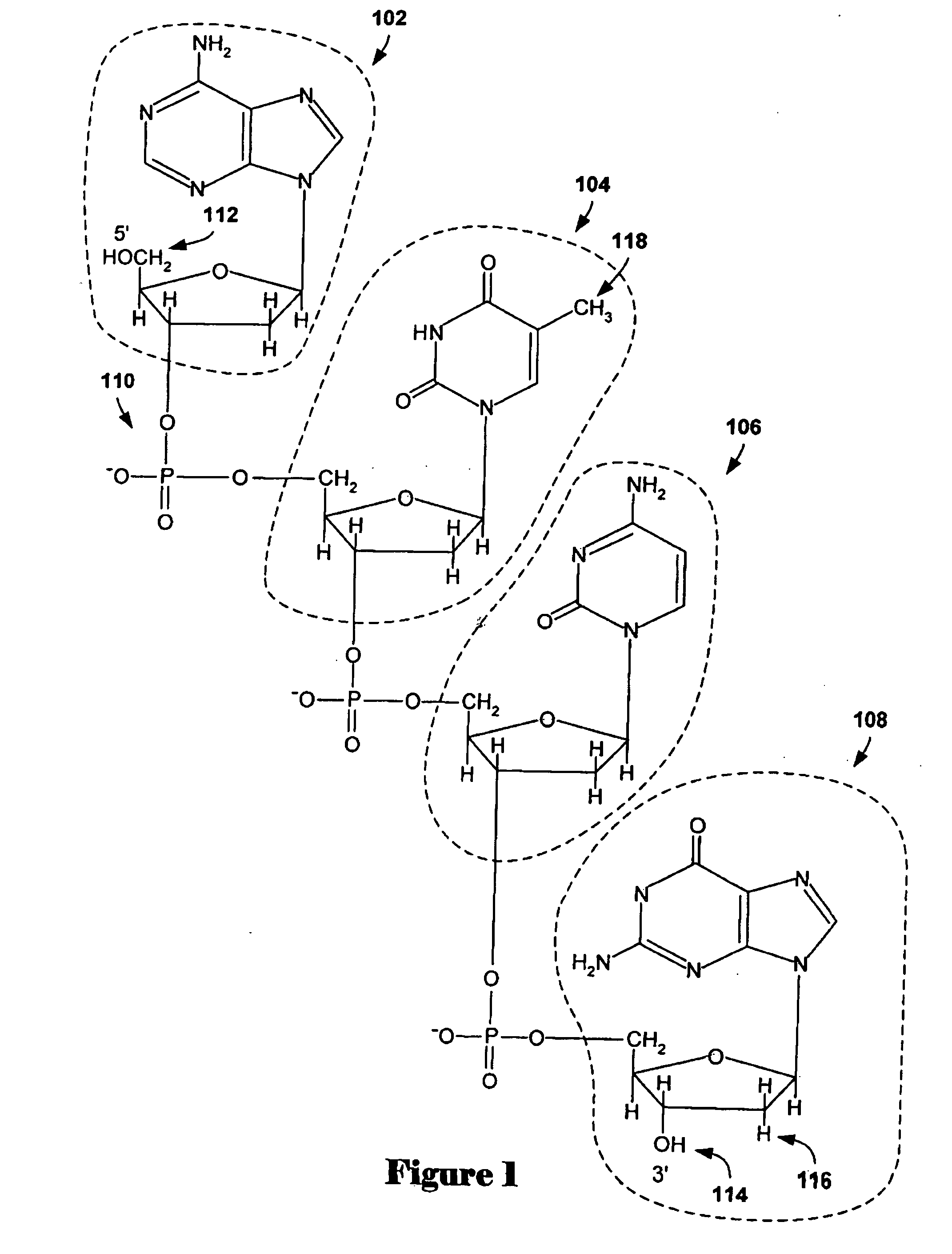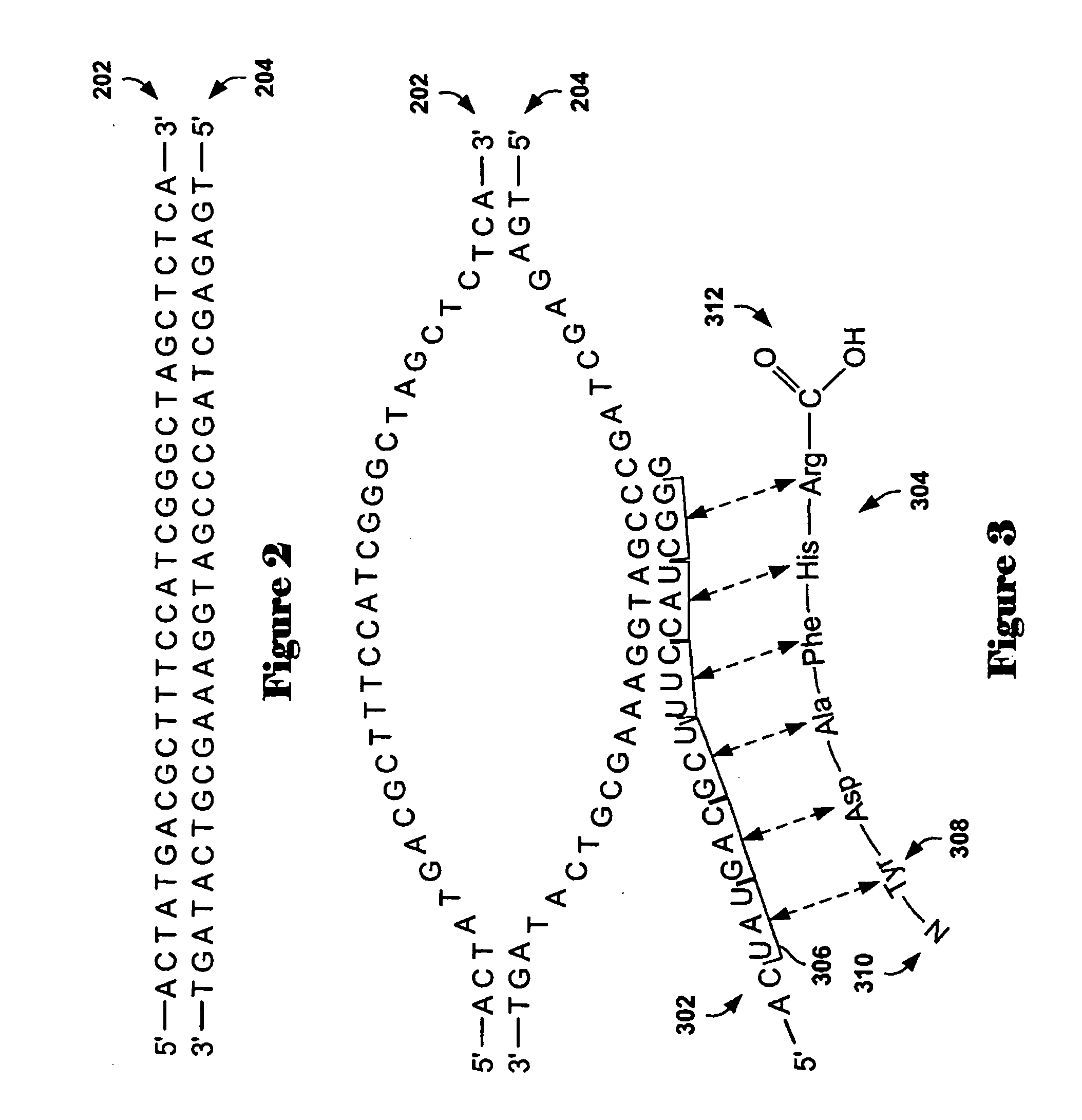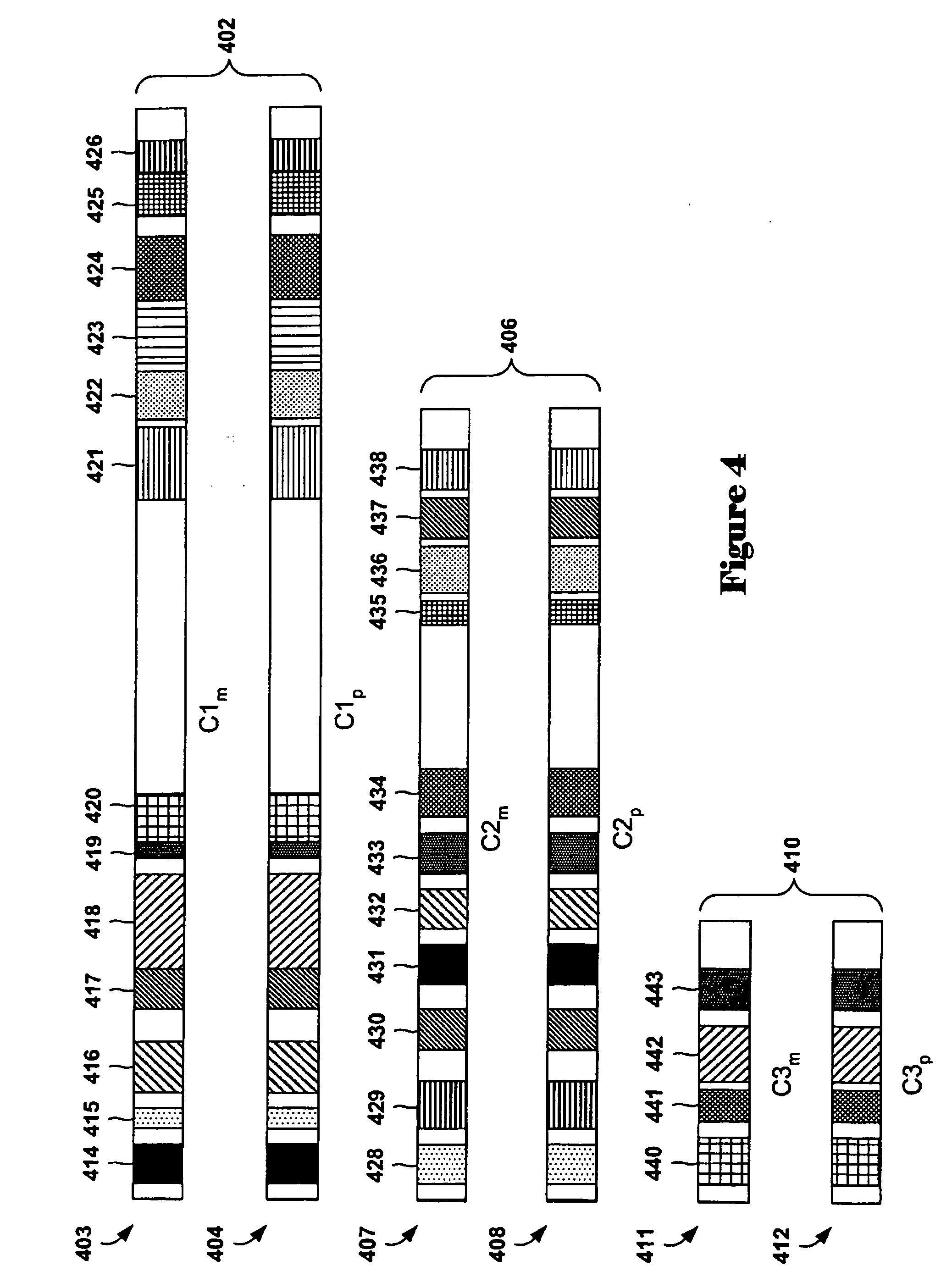Method and system for determining a zero point for array-based comparative genomic hybridization data
a genomic hybridization and array technology, applied in the field of array-based comparative genomic hybridization data analysis, can solve the problems of quantitative analysis of cgh data, proper normalization, high reliability and resolution
- Summary
- Abstract
- Description
- Claims
- Application Information
AI Technical Summary
Problems solved by technology
Method used
Image
Examples
Embodiment Construction
[0036] Embodiments of the present invention are directed to methods and systems for identifying zero-point values, or centralization constants, for aCGH data sets. Commonly, aCGH data sets are analyzed using aberration-calling methods in order to determine those array-probe-complementary chromosome subsequences that have abnormal copy numbers with respect to a control genome. Abnormal copy numbers may include amplification of chromosome subsequences and deletion of chromosome subsequences with respect to a normal genome, or to increased or decreased copies of entire chromosomes. In a first subsection, below, a discussion of array-based comparative genomic hybridization methods and interval-based aberration-calling methods for analyzing aCGH data sets is provided. In a second subsection, embodiments of the present invention are discussed.
Array-Based Comparative Genomic Hybridization and Interval-Based aCGH Data Analysis
[0037] Prominent information-containing biopolymers include deo...
PUM
 Login to View More
Login to View More Abstract
Description
Claims
Application Information
 Login to View More
Login to View More - R&D
- Intellectual Property
- Life Sciences
- Materials
- Tech Scout
- Unparalleled Data Quality
- Higher Quality Content
- 60% Fewer Hallucinations
Browse by: Latest US Patents, China's latest patents, Technical Efficacy Thesaurus, Application Domain, Technology Topic, Popular Technical Reports.
© 2025 PatSnap. All rights reserved.Legal|Privacy policy|Modern Slavery Act Transparency Statement|Sitemap|About US| Contact US: help@patsnap.com



